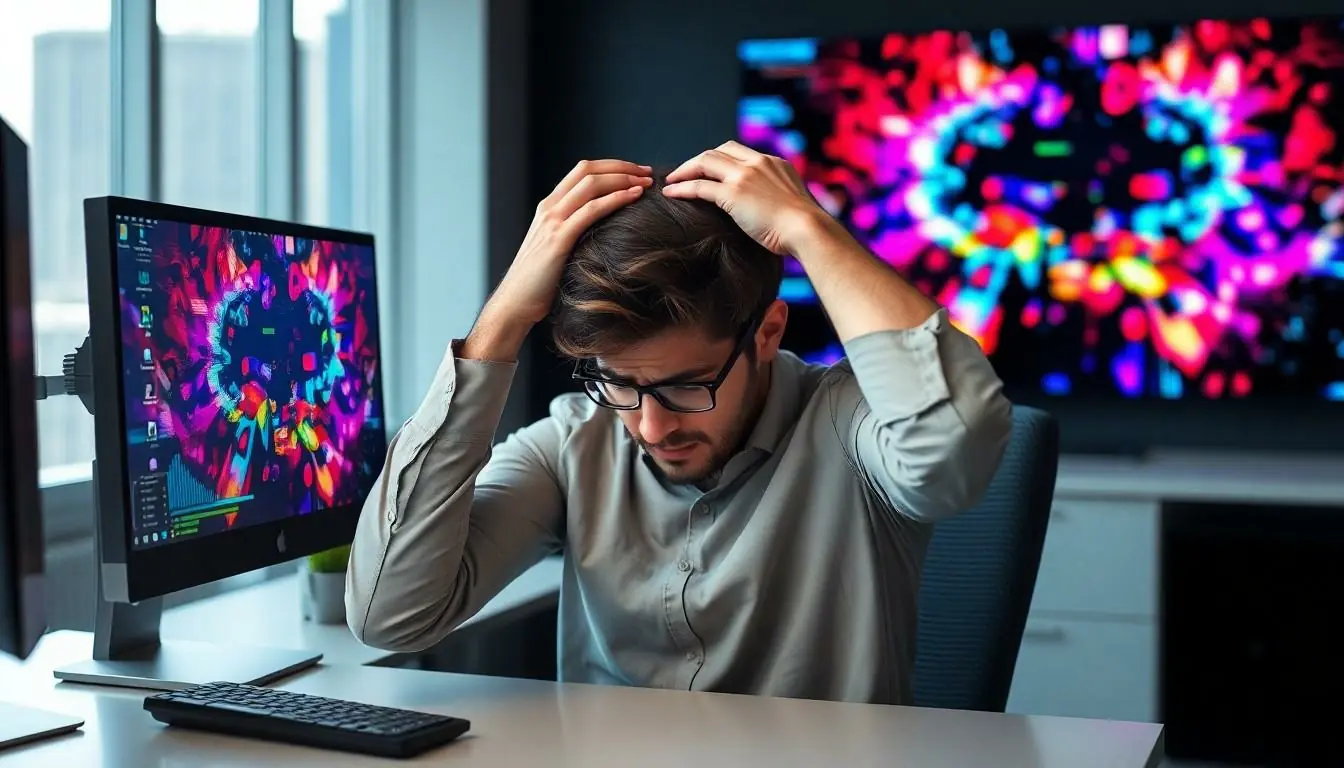In a world where AI can whip up text faster than a caffeinated squirrel, it’s baffling when image generation hits a snag. ChatGPT’s image generation feature should be like a magic wand, conjuring visuals with a wave. But when it doesn’t work, it’s like trying to make toast without plugging in the toaster. Frustrating, right?
Table of Contents
ToggleOverview of ChatGPT Image Generation
ChatGPT’s image generation feature aims to create images based on user prompts. It combines cutting-edge AI technology with user interaction, presenting an intuitive approach to visual content creation. Users expect a straightforward experience, akin to using a simple tool for crafting images. When it doesn’t function as intended, disappointment often follows.
Various factors contribute to its functionality. First, software updates can impact performance. If a recent update introduces bugs, it may disrupt existing features, including image generation. Second, server load plays a significant role. High demand for services can lead to downtime or limited access. Users experience frustration when they try to generate an image during peak usage times.
Additionally, underlying model limitations can pose challenges. The algorithms governing image generation might struggle with certain complex requests. If the input lacks clarity, the system may not produce the desired output. Error messages can add to user confusion in these scenarios.
Finally, external factors may affect performance. Network issues can slow down processing speed or hinder connectivity. If users experience lag, it detracts from the overall experience. Addressing these various issues requires continual advancements in technology and user support.
Understanding these aspects helps users navigate the challenges surrounding ChatGPT’s image generation functionality. By recognizing common problems, users can adjust their expectations accordingly while awaiting improvements.
Common Issues with ChatGPT Image Generation

Multiple factors contribute to challenges with ChatGPT’s image generation feature. Users may encounter various problems that disrupt their experience, affecting the expected functionality.
Technical Glitches
Glitches may occur during image generation, stemming from software bugs or system updates. Such issues can lead to unexpected crashes or freezes, preventing users from creating images. Server overloads often happen during peak usage times, resulting in significant slowdowns. Technical malfunctions tied to specific features may also hinder the output quality. Users may notice discrepancies in rendering or complete inability to generate images, heightening frustration when engagement levels are high.
User Input Problems
User input plays a crucial role in determining the success of image generation. Ambiguous prompts can lead to undesired results, as the algorithm struggles to interpret vague instructions. Specificity in requests significantly improves outcomes, as well-defined ideas guide the image creation process. Complex or overly intricate demands may overwhelm the system, leading to failures in generating suitable images. Users need clarity in their prompts to enhance the functionality of the image generation feature.
Potential Reasons for Inaccessibility
Several factors can lead to inaccessibility within ChatGPT’s image generation feature. Understanding these factors provides clarity on user experiences.
Server Overload
High server demand affects performance, especially during peak usage periods. When many users access the feature simultaneously, response times may increase significantly. Server overload can cause delays or failures in image generation. Users experience frustration as they await results that do not materialize. Log data often shows spikes in requests correlating with outages. Consistent monitoring and scaling of server resources can help mitigate these challenges.
Software Limitations
Certain software limitations also hinder image generation effectiveness. The algorithms underlying ChatGPT’s image generation may struggle with intricate or abstract prompts. Bugs can emerge during software updates, impacting overall functionality. As a result, output quality can vary dramatically, with some images failing to generate entirely. Keeping software up to date helps minimize issues, but the technology itself still has progress to make in accommodating diverse requests. User feedback plays an essential role in guiding these improvements.
User Experience Feedback
Users express significant dissatisfaction with the image generation capability of ChatGPT. Several factors contribute to this frustration.
Case Studies
In one case, a user attempted to create a simple landscape image. Despite providing clear instructions, the output remained far from expectations. Another user tried generating a complex character design but faced delays due to server overload. These examples illustrate how unpredictability in the system disrupts the user experience. Frequent crashes during high-demand periods demonstrate the ongoing challenges. Performance inconsistencies can hinder efficiency when generating images.
User Testimonials
Customer feedback emphasizes the need for improvement. One user reported, “The feature works occasionally, but that’s not enough.” Another expressed frustration when the images generated did not align with their creative vision. Users find it disheartening when technical issues lead to incomplete or poorly rendered outputs. Many individuals mention that specific prompts yield better results, yet the unpredictability remains an ongoing concern. Consistent user experiences highlight the urgency for enhancements in the system’s performance and reliability.
The challenges surrounding ChatGPT’s image generation feature highlight the complexities of integrating advanced AI technology. Users often face frustrations due to technical glitches server overloads and ambiguous prompts. While the potential for creating stunning images exists the current limitations can hinder the experience.
As improvements are made through user feedback and ongoing updates the hope is for a more reliable and efficient image generation process. Adjusting expectations and understanding the factors at play can help users navigate these challenges while anticipating a better experience in the future.




